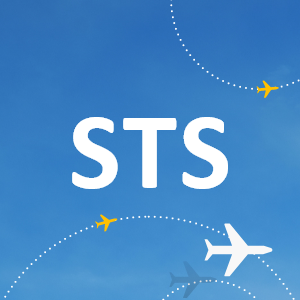
The Charles M. Schulz Sonoma County Airport (STS or “airport”) is located near the City of Santa Rosa, the largest city in Sonoma County. The Santa Rosa-Petaluma Metropolitan Statistical Area (MSA) is part of the larger San Jose-San Francisco-Oakland Combined Statistical Area (CSA). In the broader North Bay Region (“region”) that comprises several counties north of San Francisco, STS is the only airport that offers scheduled commercial air service. STS defines its catchment area to be broader than the Santa Rosa-Petaluma MSA and to include an estimated population of 1.2 million in 2018.

STS faces a significant competitive challenge from other nearby commercial airports with significantly more air service options. STS is a relatively short distance from San Francisco International Airport (SFO), Oakland International Airport (OAK), San Jose International Airport (SJC), and Sacramento International Airport (SMF).
| Airport | Distance (miles) | Drive time (hrs.) | Avg. daily flights 2019 | Markets served 2019 |
|---|---|---|---|---|
| Sonoma County (STS) | -- | -- | 12 | 9 |
| Oakland International Airprot (OAK) | 74 | 1.25 | 148 | 42 |
| San Francisco International Airport (SFO) | 74 | 1.5 | 520 | 101 |
| Sacramento International Airport (SMF) | 105 | 2 | 158 | 35 |
| San Jose International (SJC) | 119 | 2 | 195 | 41 |
Regional Economic Strengths
The region’s economy revolves around high technology industries; agriculture, particularly the world-famous wine industry; and tourism. The area’s economy features multiple tradeable clusters that are among the top performers in the country. They include those associated with the region’s agricultural and wine industry (food processing), along with agriculture, medical devices (e.g., optical instruments, surgical and dental instruments), and financial services.
The Airport and Its Commercial Service
Somewhat uniquely at STS, capacity was constrained by the length of its main runway. When Alaska Airlines initiated service at STS in 2007, it could do so because the airport’s main runway could accommodate the airline’s 76-seat turboprop Q400s. Alaska Airlines started service with flights to Los Angeles International and Seattle Tacoma International. It then expanded to Portland and Las Vegas.
After the airport extended its main runway in 2014, the total capacity offered at the airport rose significantly as airlines added jet service. Alaska Airlines added daily flights to Orange County John Wayne Airport in 2016. From 2017 to 2019, American Airlines added service to Phoenix Sky Harbor International Airport, Dallas/Ft. Worth International, and Los Angeles; and United Airlines entered service at STS with operations to San Francisco International (SFO) then added service to Denver International. Between 2014 and 2019, the number of flights and seats basically doubled. In July 2019, airlines serving STS offered nonstop scheduled services to 10 destinations with an average of 825 daily seats. Alaska Airlines provided 63 percent of the available seat capacity.
Connectivity
After the 2014 runway extension enabled the introduction or expansion of nonstop service to well-connected hubs like Los Angeles, San Francisco, Phoenix, Denver, and Dallas/Ft. Worth, connectivity at STS increased substantially. Service to these hubs facilitated onward connections to a larger number of markets and regions, thereby helping to more than double the air connectivity from STS between 2014 and 2019. The single largest year of growth in connectivity at STS occurred between 2016 and 2017, when connectivity jumped by 37 percent due largely to the introduction of daily service to SFO and PHX.
Analysis of Air Service and Economic Activity
Passenger traffic is highly correlated with total regional employment. As total regional employment increased, total origin and destination (O&D) traffic at STS also increased. However, correlation does not establish causation. It is not clear whether changes in employment lead to changes in O&D activity or vice versa. (The graph only shows data for those years when the main runway was lengthened, allowing jet service.) A similar correlation exists if employment is restricted to those sectors that have a greater reliance or dependency on air service, such as financial and insurance services; professional, scientific, and technical services; real estate; and management of companies. As employment in those sectors rises, so does O&D traffic at STS and vice versa.
Communicating the Airport’s Economic Impact
Airport management works closely with all its partners including the local Chambers of Commerce, Sonoma County Tourism, and Visit Santa Rosa. These partners have provided financial, marketing, and data support for STS’s air service development initiatives.
STS believes that for most stakeholders a high-level economic impact study works best. However, to convince the business community to support air service development efforts (especially those aimed at expanding connectivity), economic analyses that demonstrate how new connecting service would benefit the community economically and environmentally would be valuable. The analyses need to have a robust and easily communicated storyline.
